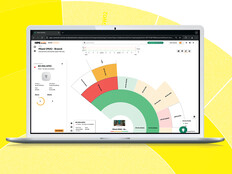5 Tips for Deploying an Outdoor LAN
Wi-Fi provisioning, attractive pricing and amazing capacity make outdoor Wi-Fi coverage for office campuses, major urban centers and business districts within the reach of network managers everywhere.
Keep in mind the inverse relationship between distance and throughput in any wireless system — the farther away, the slower the network. Keeping the distance between endpoints unobstructed and no greater than is absolutely required are the best guarantees of good results. Here are some other recommendations to make an outdoor wireless rollout go smoothly.
1. Provision sufficient capacity.
Analyzing requirements based on raw throughput alone is a common mistake. Instead, determine overall capacity based on application mix, noting again that greater range usually negatively affects this objective.
2. Verify building and local codes.
While Wi-Fi-based outdoor products operate in unlicensed spectrum, that doesn’t free operators from regulatory requirements. Local building and safety codes apply to elements such as secure mountings, lightning arresters, height limitations and related items. Adhering to these provisions will help avoid legal complications later.
3. Analyze backhaul requirements.
An access point bridges wireless clients on one side and wired backhaul on the other. IT managers must provision sufficient capacity on the wired side to get the most out of the wireless side. If wiring proves to be inconvenient or impossible for some venues, look for products that use a wireless mesh technique that enables one AP to relay through another one.
4. Use weatherproof products or housings.
Many APs are designed for outdoor installation and are built to be weatherproof. A variety of third-party waterproof housings are available as well, but make sure there’s a match between the selected AP and the outdoor box that will hold it. Never jury-rig a solution for power or antennas.
5. Evaluate antenna requirements.
The antenna is critical to operation. While most products use omnidirectional antennas, which transmit and receive in all directions, outdoor WLANs used as bridges can apply directional antennas because the other end of the connection is fixed. But don’t swap antennas without verifying compliance with FCC or related regulations.
The low cost, flexibility and great performance of today’s outdoor WLAN wares make them an excellent choice in meeting a wide variety of network challenges.









